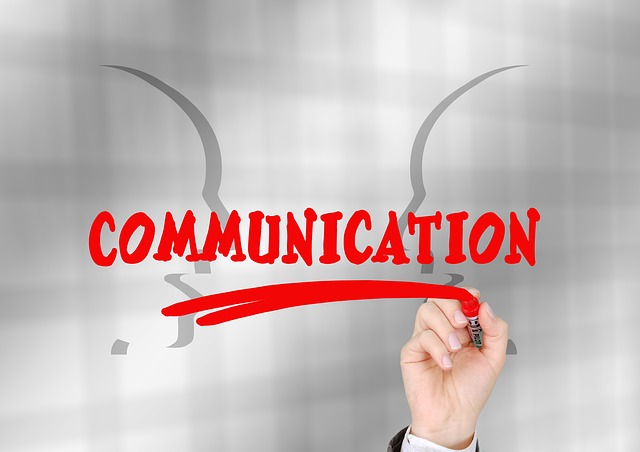Dialogue is a powerful tool for both fiction and creative nonfiction writers alike, as it can help bring stories to life and create a sense of realism for readers.
Without dialogue you can’t make characters interact with each other, and without this interaction most stories would become dry and one dimensional.
Having said that, dialogue is more than just words coming out of your characters’ mouths, they also need to express a range of emotions and personalities.
Great dialogue will make your book unputdownable while poor dialogue will make readers want to put your book down. In this article, you’ll learn tips and tricks from the pros to create effective dialogue that’s both believable and compelling.
What Are the Main Goals of Dialogue In a Story?
A key goal of dialogue in a story is to provide insight into your characters’ thoughts, feelings and motivations. It can also help move your plot forward as well as create suspense and tension in a scene. Dialogue helps bring stories to life and create a sense of realism for readers (pro tip: make sure to use it only when it adds something meaningful to your story and never as filler.)
What Makes Dialogue Successful?
There are many elements required to make dialogue successful. For starters, good dialogue needs to be realistic and sound like something people would actually say in conversation.
We don’t speak in the same way we write, so as a writer you need to make sure your characters don’t sound unnatural.
Dialogue needs to flow smoothly and convincingly, it should be obvious at all times who’s saying what, and it should get to the point quickly without wasting words.
Now, before you write your first line of dialogue, it would be a good idea to read plenty of excellently written dialogue from popular authors, so you can analyze their techniques and unearth their “secret sauce.”
Once you’re ready to lay down your first few lines, use the following tips to sharpen your dialogue technique:
- Pay attention to the setting and make sure the dialogue fits with the era and location
- Make sure each character has a unique voice and personality
- Write dialogue that creates suspense or tension
- Avoid exposition-heavy dialogue that could be conveyed through narration instead
- Be selective about which scenes warrant dialogue and which can be conveyed through description or action
- Edit your dialogue multiple times for clarity and brevity
- Practice, practice, practice! The more you write dialogue, the better you’ll get at capturing realistic speech patterns and crafting effective scenes
By following these tips, you can start crafting engaging and believable dialogue that adds depth to your stories.
How Do You Write Dialogue?
The rules of dialogue writing are quite simple to follow. Basically, you just need to learn a few tricks of the trade and then apply them with consistency.
Here are the five basic building blocks to format dialogue with:
- Use double quotes to enclose speech from characters. All punctuation needs to fall inside the quotation marks. Anything falling outside of the quotation marks is considered a dialogue tag (a description of the character’s actions)
- Use single quotation marks inside of the double quotes to indicate that your character is quoting someone themselves
- Dialogue tags may appear before of the initial or after the closing quotation marks
- Every time you switch speakers you must start a new paragraph
- Each paragraph must be indented
The 5 General Rules of Dialogue Development
In addition to the above writing mechanics, there are five developmental rules that you should always keep in mind when crafting dialogue:
1. Make sure the dialogue is true to how people actually talk
When writing dialogue, it’s important to capture how people actually talk. This means using contractions, realistic speech patterns, proper punctuation and other elements of natural speech to indicate the speaker’s change in tone or emphasis.
In order to make dialogue feel authentic, you should also take into account the setting and the characters involved and add slang that’s appropriate to the age, origin, and upbringing of your characters.
2. Consider how the dialogue relates to your characters’ unique personalities
When writing dialogue, it’s important to consider how the conversation reflects your characters’ personalities and how it fits into the story’s setting.
Say, if you’re writing a conversation between a New Yorker and a Londoner, it should be obvious to the reader who’s who.
They should each use different words, expressions, intonation, mannerisms, and so forth.
For example, some characters might express themselves in short bursts, while others may use long sentences. Some might speak calmly while others may talk aggressively.
In short, your dialogue needs to capture all of the above in a way that’s always clear to the reader so there’s never confusion in their minds as to who’s saying what.
3. Balance action with dialogue
Too much dialogue can slow down the pace of a scene while too much action can take away from character development or plot points.
When writing dialogue, it’s important to strike a balance between the two. Now, this is a lot easier said than done and how to achieve this balance is beyond the scope of this article. But, the best way to figure this out is to read a lot of great novels so you can develop a strong foundation to build upon.
4. Use dialogue to move the story forward
Rather than just serving as exposition, make sure each conversation has a purpose and helps advance your plot in some way.
Use dialogue to disclose clues about what’s coming next to create anticipation for your readers. In this way, you’ll keep them engaged, enthralled, and entertained.
In short, make use of dialogue to control the pace of your story.
5. Read aloud what you have written and listen for any unnatural patterns or awkward phrasing
When you read dialogue aloud, you can more easily detect any awkward phrasing or unnatural patterns. This simple practice is a great way to edit your work and make sure it’s grounded in reality.
You can also get a sense of how the conversation flows so you can make it sound believable. If it doesn’t sound right coming out of your mouth, then go back and tweak it until it does.
Things to Avoid When Writing Dialogue
Above, we’ve addressed those things you need to do to write good dialogue. Below we’ll address those things you need to stay away from to ensure your story doesn’t feels amateurish:
- Don’t use too many adjectives or adverbs when describing dialogue
- Don’t have the characters talk about things that don’t matter to the story
- Don’t have the characters narrate their own thoughts aloud
- Don’t make the dialogue sound too formal, stilted, or unnatural
- Don’t use ten words when five will get the same message across
- Don’t have the characters speak in perfectly manicured and complete sentences
- Don’t force the dialogue to achieve too many things at once
- Don’t make the characters all sound the same
- Don’t write lengthy passages of dialogue without any action or description to break it up
- Don’t forget to punctuate your dialogue correctly
- Don’t write conversations that are unrealistic or clichéd, and thus not believable for readers
- Don’t use dialogue to info-dump your readers on backstory or world-building information
- Don’t forget that a conversation is a two-way street — give your readers a chance to hear both sides
Simple Example of Dialogue
Here’s a short example of dialogue between two characters to illustrate some of the moving parts described above. Beware: this passage is for illustration purposes only and it’s not meant to be a lesson in masterful dialogue writing!
“I can’t believe you said that!” she exclaimed.
He sighed and replied, “It’s not like I had a choice in the matter.”
She shook her head, her eyes blazing. “You always have a choice! Don’t you see how wrong it was?”
He looked away, unable to meet her gaze. “Yes, I do…but there wasn’t anything else I could really do.”
She stood up and grabbed her coat. “Well, if that’s how you feel then I have nothing else to say.”
As she walked out the door, he called out to her, “Wait…please don’t go.”
Turning back to face him, she said softly, “I’m sorry, but I can’t stay. Not now.”
This example of dialogue shows how characters can use dialogue to express their feelings and emotions in a realistic sounding way, using an economy or words, and without resorting to unnatural language.
It also demonstrates how dialogue moves the plot forward. This conversation illustrates how people actually talk in real life by using contractions, realistic speech patterns and proper punctuation.
Conclusion
Writing dialogue can be challenging, but it’s an essential part of storytelling. By following the above guidelines, rules, and tips, you’ll be able to improve your dialogue skills and create powerful conversations that add depth to your writing.
Always take the time to consider how characters talk and how the conversation fits into your setting in order to make it sound believable.
Strive for a good balance between action and dialogue so that the story moves at a consistent pace, and make sure each conversation has a clear purpose and helps advance the plot.
With time and practice, your dialogue writing skills will become a powerful tool in your storyteller arsenal.
The end result will be conversations that sound realistic, engaging, and carry meaning for your readers.
Harry Wallett is the Founder and Managing Director of Relay Publishing. Combining his entrepreneurial background with a love of great stories, Harry founded Relay in 2013 as a fresh way to create books and for writers to earn a living from their work. Since then, Relay has sold 3+ million copies and worked with 100s of writers on bestselling titles such as Defending Innocence, The Alveria Dragon Akademy Series and Rancher’s Family Christmas.
Harry oversees the creative direction of the company, and works to develop a supportive collaborative environment for the Relay team to thrive within in order to fulfill our mission to create unputdownable books.
Relay Publishing wants you
If you think you have what it takes to become a brilliant writer, editor, or storyliner, Relay Publishing has a range of exciting opportunities.
Find out more about us, and get in touch.
We can’t wait to hear from you!



